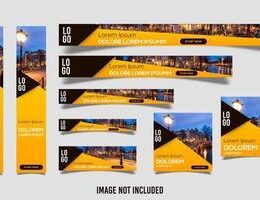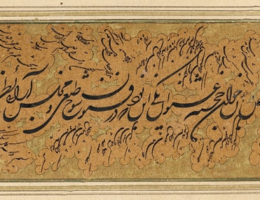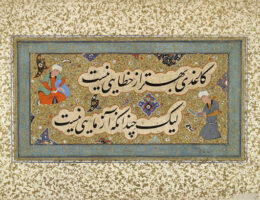IRAN ART EXHIBITION: A JOURNEY TO ART OF GRAPHIC ILLUSTRATION
Art and design are becoming more and more accessible, which makes it inevitable to mistake different mediums for one another. Take graphic design, graphic illustration and illustration, for example. It’s easy to confuse these intertwined, closely related art forms. In fact, many notable artists of the 20th century make a living at it by moving back and forth between the creative fields of illustration and graphic design.
So, what’s the difference between them? The main difference between graphic design and illustration is how and where you use them. Typically, graphic design leans more commercial, while illustration is related to fine art. As more and more commercial projects often require emotive and distinct visuals, those differences are becoming less obvious over time.
Let’s take a deeper look at graphic illustration, graphic design and illustration, what happens when you combine them, and see some inspiring ways that graphic illustration could be used for your future project.
Graphic design vs illustration vs graphic illustration
Both graphic design and illustration have their own set of techniques, mediums and artistic goals. It’s easiest to think of graphic design for its commercial motivation, while illustration takes the fine art route.
Graphic designer Adrian Shaughnessy puts it like this: “Graphic design’s ability to deliver explicit messages makes it a major (if little recognized) force in the modern world: it is embedded in the commercial infrastructure. Illustration, on the other hand, with its woolly ambiguity and its allusive ability to convey feeling and emotion, makes it too dangerous to be allowed to enter the corporate bloodstream.”
Graphic designers hold onto their anonymity more so than illustrators, as their focus is in communicating someone else’s ideas through classic design elements. Illustrators are often sought out based on their personal aesthetic and artistic skill.
What is illustration?
IRAN ART EXHIBITION: Illustrations are a visual way to portray or illustrate a written text. They might help explain an idea or tell a story or provide decoration. They come in many forms both traditional and digital.
Drawings—in both black-and-white and color—are one of the most widely used styles of illustration. Pencil drawings allow both soft lines and sharp edges. Ink drawings gorgeously showcase contrast. Charcoal drawings have the ability to create dramatic shadows and are often the tool of choice in illustrating stories. Lithography, an old drawing-meets-printmaking technique that has since been modernized, has also recently been making a comeback.
Illustrative paintings use watercolor, gouache and acrylic to tell their stories. Watercolor illustrations evoke a general feeling of softness and femininity. Gouache paint is a bit more rich, and commercial artists often choose it for posters and comics because of its speedy drying process. Acrylic is easy to use, versatile and has the ability to be used on many surfaces.
Collage, woodcut art and etchings are more physically intensive illustration techniques. Collage assembles found objects and materials to create a finished piece. Woodcut artists carve their illustrations into an actual piece of wood, a technique developed during the Middle Ages and still used by contemporary illustrators who prefer a textured look. Etchings are done by artists who work with a time-intensive process of scratching illustrations onto metal surfaces.
Illustrations are found anywhere, especially in published media like magazines, books, posters, educational materials and flyers. In the digital space of websites and mobile apps, you’ll often find illustrations created by both freehand (using a digital tablet, for example) and vector graphics (using color and shapes to mimic an illustrative style).
Illustrations have the unique freedom to exist without words, but still have the power to communicate ideas through their vivid storytelling. Details like expressions on characters’ faces help illustrations evoke deep emotion and connection.
What is graphic design?
Graphic design is the art and profession of using visual compositions to solve problems and communicate ideas through typography, imagery, color and form. While illustration focuses on creative interpretation, graphic design is all about communication with its target audience. Marketing and branding strategies (rather than text or stories) typically fuel the direction of graphic designers.
IRAN ART EXHIBITION: The types of graphic design are wide ranging in both the print and digital worlds. Posters, fliers, business cards, packaging, billboards, and logos are a few examples of predominantly physical print works, while email marketing and web design dominate the digital landscape.
Graphic design often begins with visual identity, a type of design that communicates a brand’s personality, story and emotion through logos, typography, color palettes, images, and style guidelines to ensure consistency through all other designs.
Marketing has traditionally been focused on print materials, like flyers, magazine and newspaper ads. Publication designers produce layouts, hand-pick typography and arrange artwork for long-form projects, like books, newspapers, magazines and catalogs. Packaging designers communicate directly to consumers through the physical products. Environmental design unites design and architecture to create engaging spaces through signage, murals and exhibition displays.
The internet has also opened up other ways for graphic designers to bring brand awareness through digital channels. User interface and experience (UI/UX) designers focus on how to make more enriching interactions between users and desktop apps, mobile apps, web apps and games. Motion graphics design for online media, TV and film crafts ads, trailers, GIFs, web banners and presentations.

IRAN ART EXHIBITION: Graphic designers often have at least one design specialization, but because the industry is constantly changing, designers must be flexible. And that can often mean exploring more fine art styles and techniques.
What is graphic illustration?
Graphic illustration takes characteristics from both graphic design and classic illustration and combines them. While graphic design puts more emphasis on communication, and illustration leans more into fine art, graphic illustration is what happens when we marry both together. It’s the best of both worlds.
Graphic illustration applies the classic design principles of color, form, shapes, and layouts to organize and showcase original artwork.
Like graphic design and illustration separately, graphic illustrations help to express ideas visually, clarify concepts, sell products, educate and promote. They’re found everywhere: flyers, fabrics, books, advertisements, packaging, posters and websites. They can utilize any technique, from printmaking and drawing, to graphic depictions of data and statistics.
Graphic illustrators come with a skillset involving drawing, painting, art history, digital illustration, business and marketing. They require both artistic skill and creative thinking necessary to communicate abstract concepts simply and effectively.
When should you use graphic illustration?
IRAN ART EXHIBITION: When your business needs a much more specialized, stylistic approach to your marketing, a graphic illustrator is the best professional to consult. Graphic illustrations keep creative expression at the forefront, while also making sure to adhere to your marketing strategy and design elements. It’s a great chance to build a deeper connection between your users and products or ideas.
Is your brand in the process of developing a strong aesthetic and illustrated character to act as the face of the company? Or are you interested in featuring a detailed illustration of your company culture on your homepage? These are great opportunities to bring this stylistic technique to your business.
Graphic illustration: the best of both design worlds
Our current design era can be described as ambiguous. But it’s also a chance for distinct art forms and practices to entangle skill sets and share potential with one another. That’s just how art evolves. Graphic design, illustration and graphic illustration offer beautiful opportunities to take your brand to the next level.






